7 Essential Bee Garden Design Tips
Bees may be small, but they are critically important to the sustainability of agriculture and ecosystems. Plants and flowers depend on them as pollinators, and they discourage harmful pests. That’s why planting a bee garden—one lush with bee-friendly flowers and plants—can help the surrounding landscape flourish, especially with the right bee garden design. As an added bonus, the bees make delicious honey, and when we humans harvest it, our actions bear no impact on the bees themselves.
To gather tips for designing a bee garden, last year I visited the Haagen-Daas Honey Bee Haven at the University of California, Davis. I returned inspired to set aside a small parcel of land near Jordan Winery’s culinary garden to serve as a bee garden surrounded by bee-friendly plants. We completed the Jordan apiary this spring.
In all, the new bee garden has nine hives—six traditional Langstroth-style hives with honeycombs you pull out, and three innovative Flow Hives that let us access the honey from a tap.
This year will be the apiary’s first full year of operation. If all goes well, we’re hoping to harvest about 150 pounds of honey—anywhere from 20 to 70 pounds from the Flow Hives, and a total of 80 from the Langstroths. Of course, we also hope the bees will improve the health of our gardens, and the overall health of the ecosystem at the Jordan Estate. We’re excited about the possibilities.
Apiary and bee garden design are more science than art. I spent months studying before I dove in. Here are seven bee garden design tips I’ve learned along the way:
Essential Tips for Your Bee Garden Design
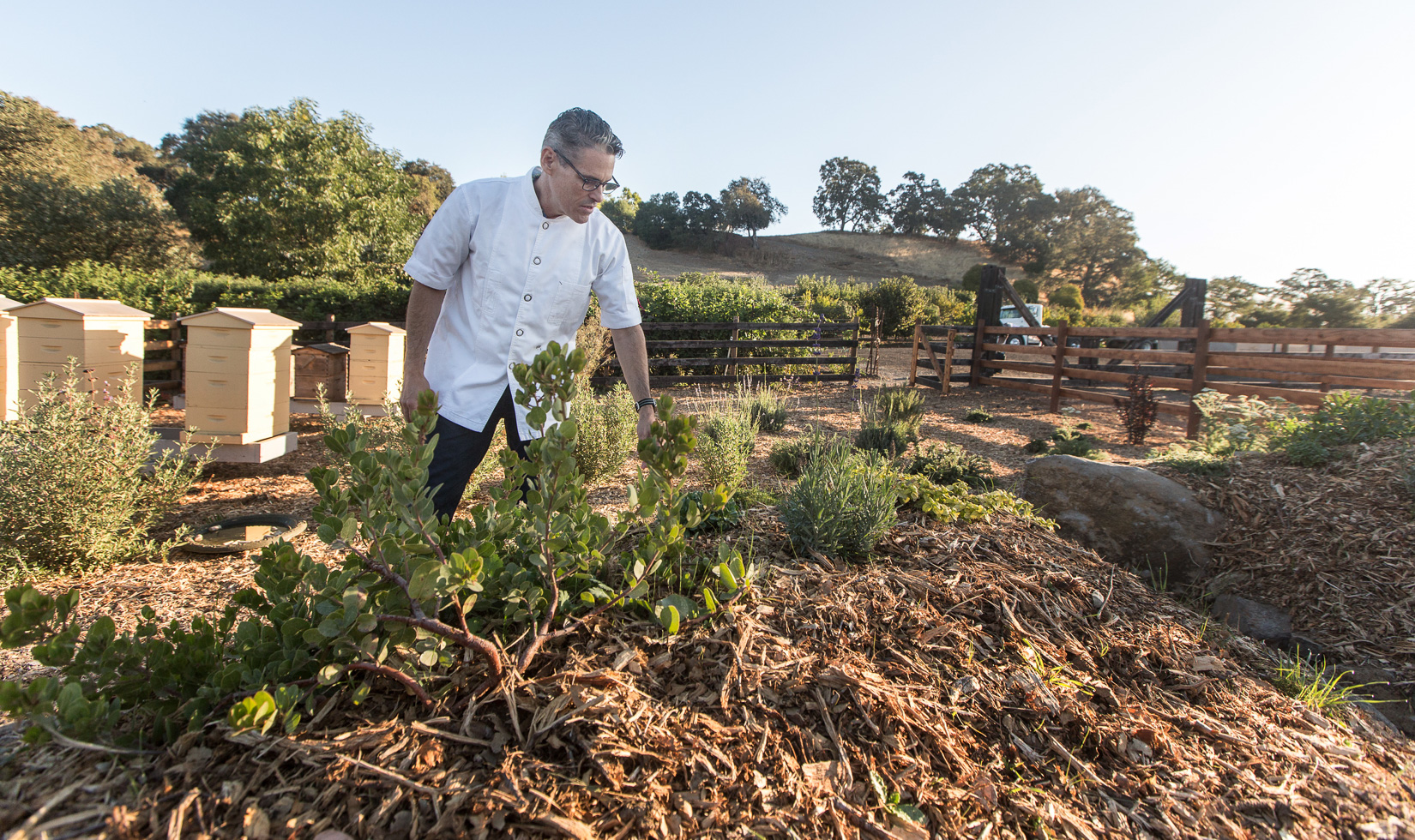
1. Provide native, bee-friendly plants to attract native bees.
Within 200 meters of the apiary, we have added several native species of bee-friendly plants, including toyon, wisteria, thyme, marjoram, lavender, California flannelbush, salvia, manzanita, madrone, wild lilac, catmint, lupine, and various thistle. These, along with boysenberry and blackberry canes, have helped attract at least three volunteer swarms.
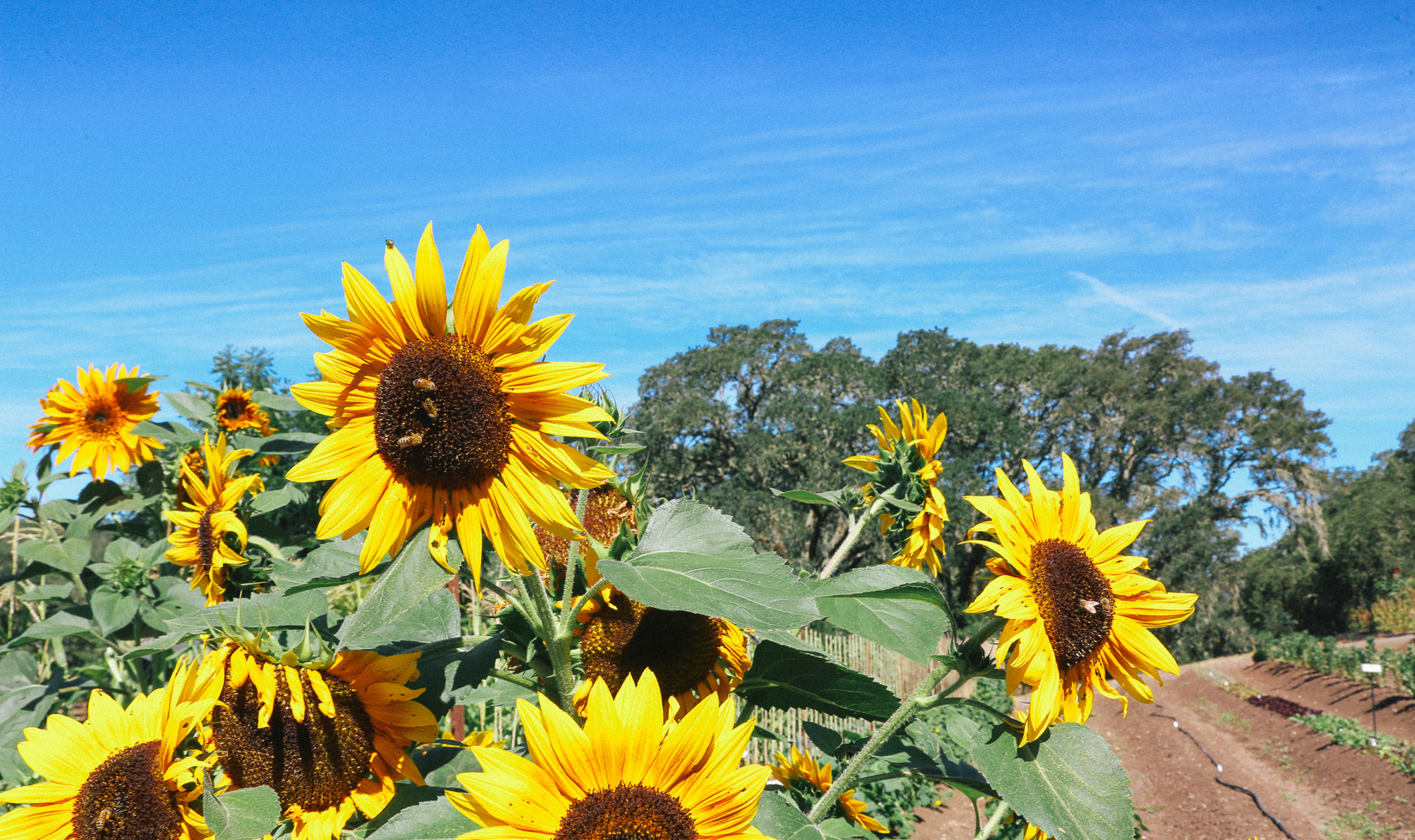
2. Plant bee-friendly flowers in color blocks.
When you plant bee-friendly flowers, it’s important to plant like colors together. Scientists say this makes it easier for bees to locate the flowers as they’re foraging. Lucky for us humans, color-blocked gardens also look pretty.
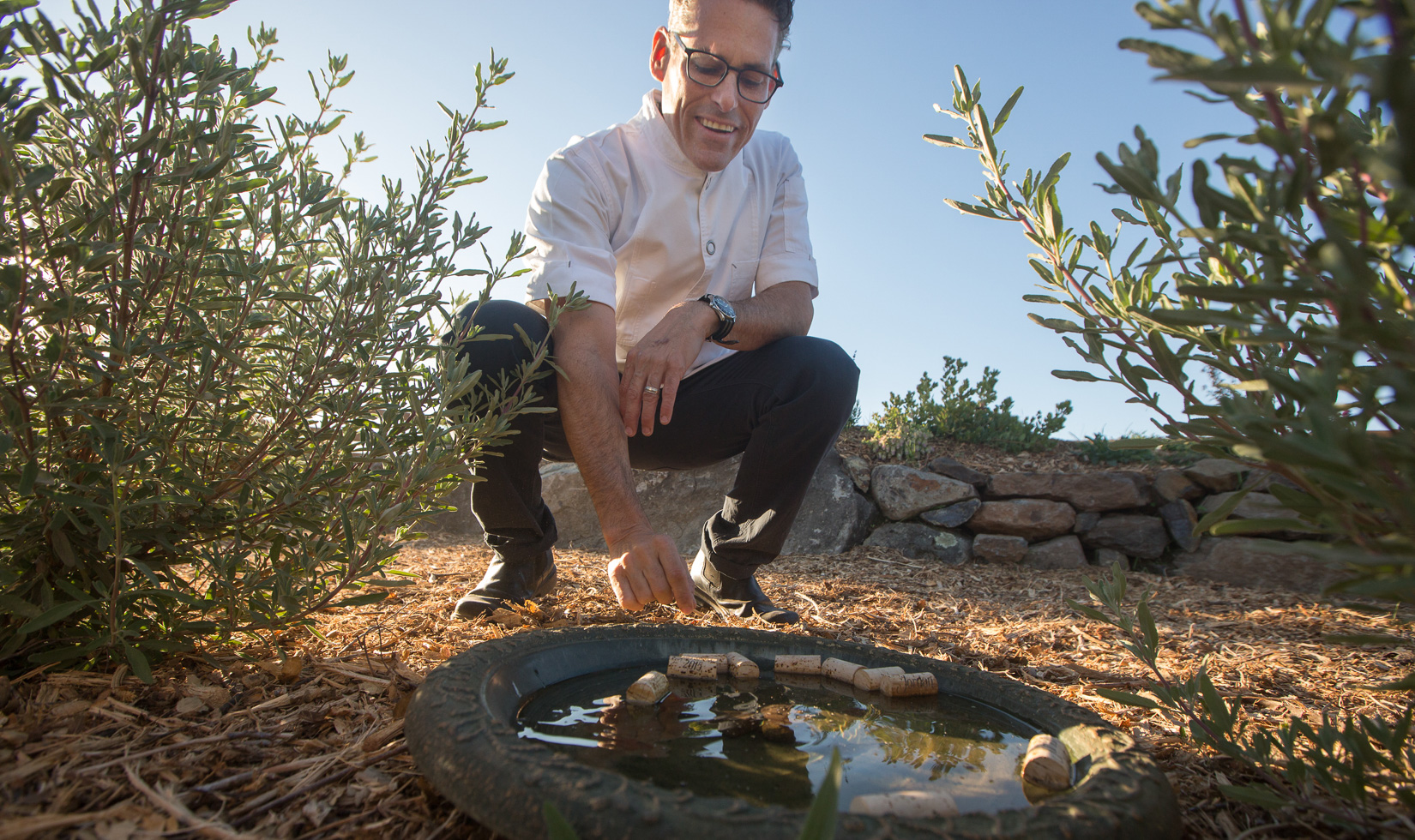
3. Offer ample sources of water in your bee garden.
Believe it or not, bees drink and bathe themselves, just like any other animal. For this reason, it’s important in a bee garden to provide plenty of water. We read that bees prefer dirty water or pond water. We also read that it helps bees to have places to land in the water sources, so we fashioned little flotillas of Jordan wine corks to help.
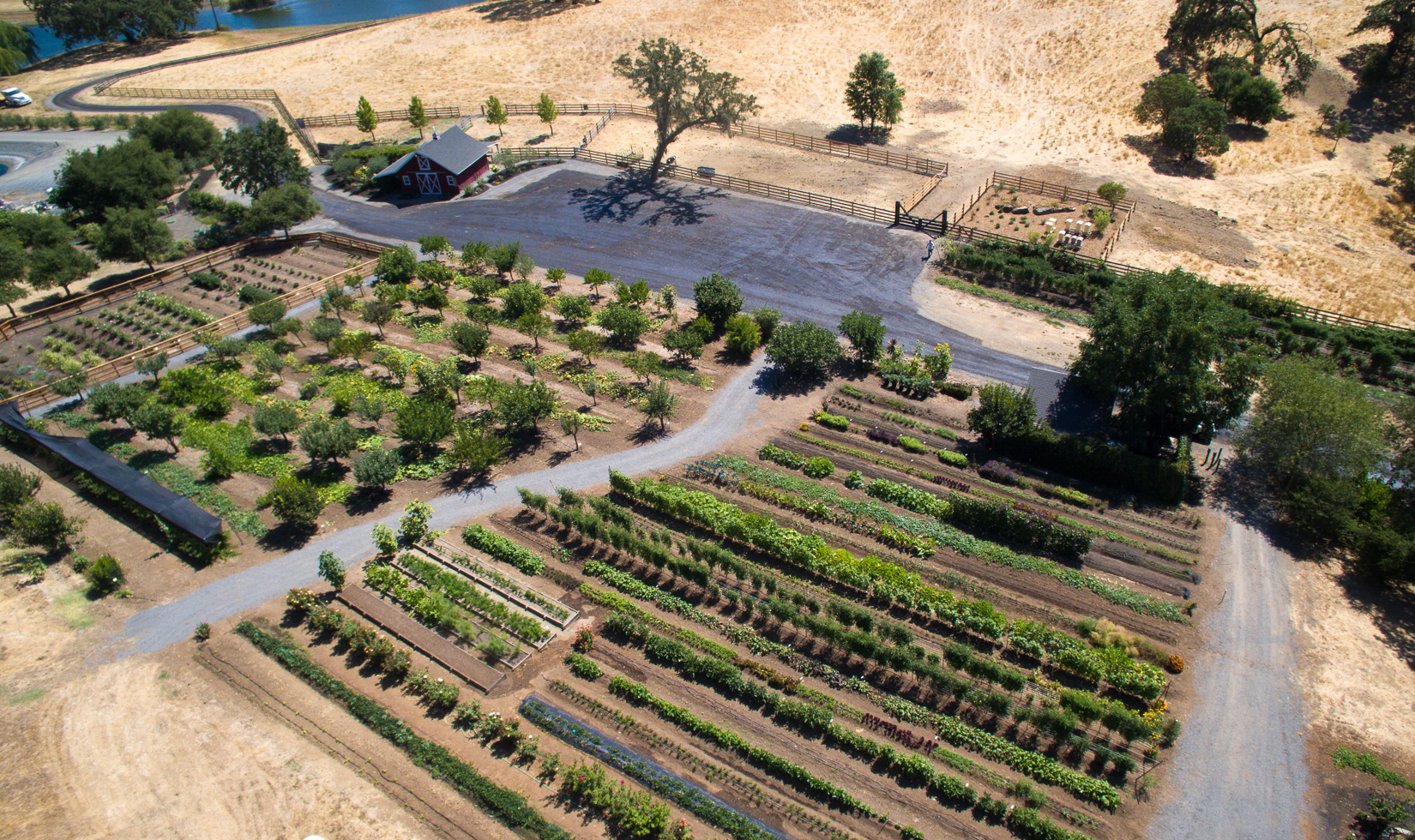
4. Avoid using herbicides or pesticides.
This one is pretty obvious; any unnatural chemicals are toxic for the bees. Much like our culinary garden, our apiary is organic. We try to keep it as clean as possible.
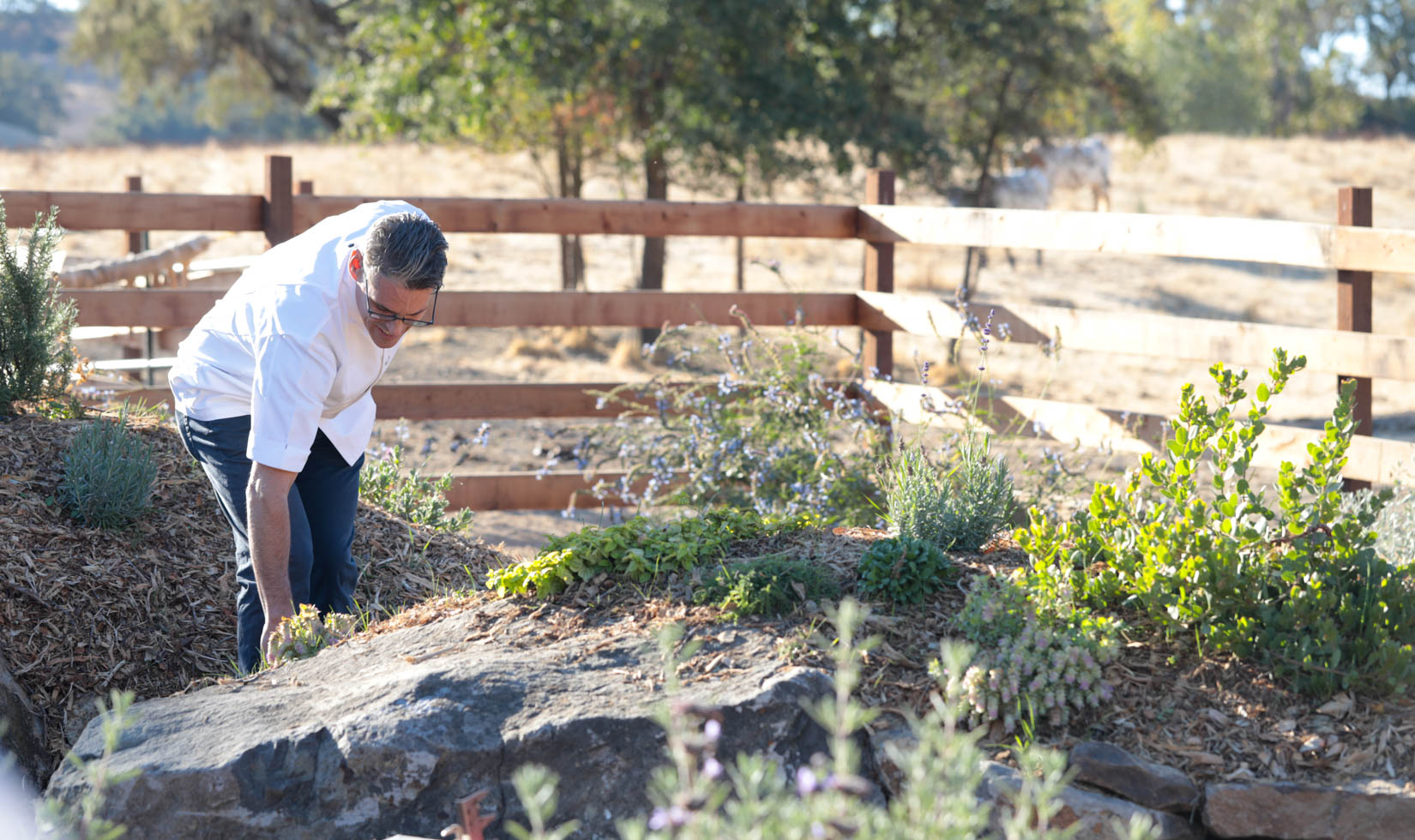
5. Add boulders to mix up terrain and encourage bee-friendly plant growth.
Bee experts suggest adding boulders to apiaries for the creeping plants—thyme, marjoram and the spreading manzanita. Allowing these bee-friendly plants to get vertical increases the surface area for bees to pollinate. It also looks great to the human eye.
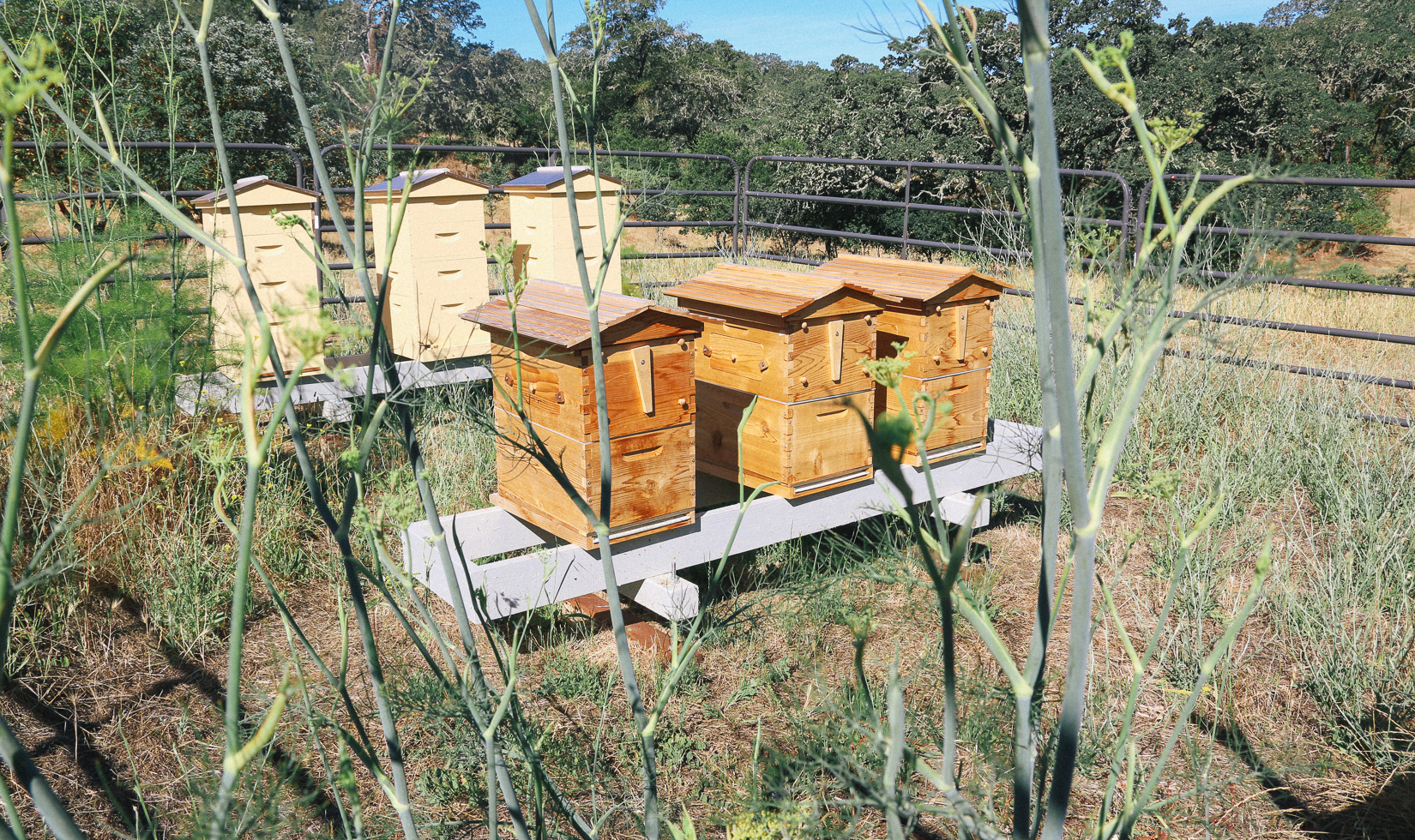
6. Appreciate the beauty of weeds in your bee garden.
Dandelions, clovers, loosestrife, milkweed, goldenrod, and other flowering weeds are essential food sources for bees. In most gardens, you’d pull these out. In bee gardens, however, it’s important to leave them in.
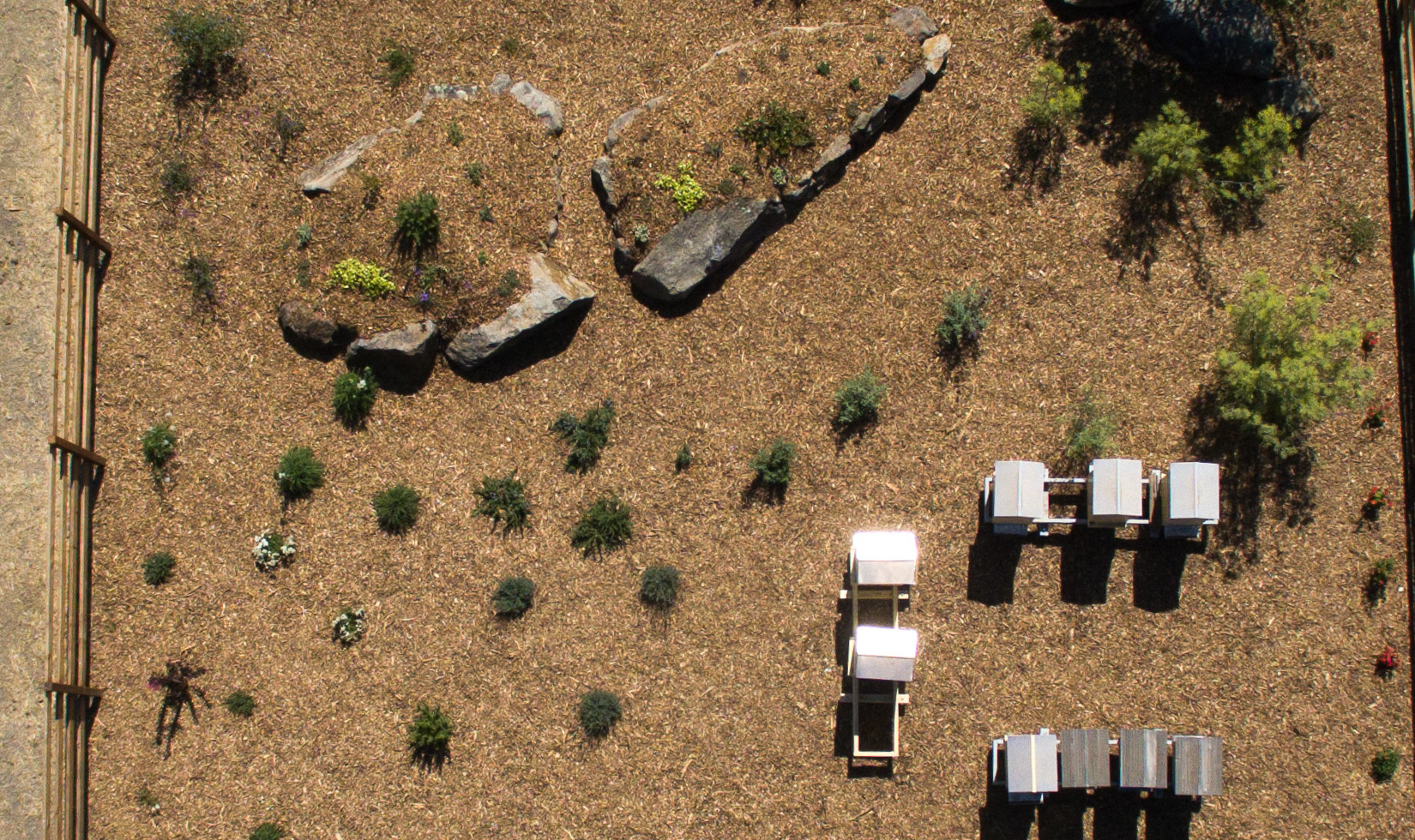
7. Provide sugar only if needed.
Bees only need sugar in the winter or in drought conditions. With our pollination footprint, we will require less dependence on simple syrup to supplant the bees’ natural nectar supply.
In addition to the Honey Bee Haven, the Bee-Friendly Farming Task Force of the North American Pollinator Protection Campaign (NAPPC) has been a great resource on my journey to learn more about bees.
See the Jordan bee garden in action on the seasonal Jordan Estate Tour & Tasting and Vineyard Hikes. Join the Jordan rewards program to earn points you can redeem toward exclusive guest privileges at our Alexander Valley estate.
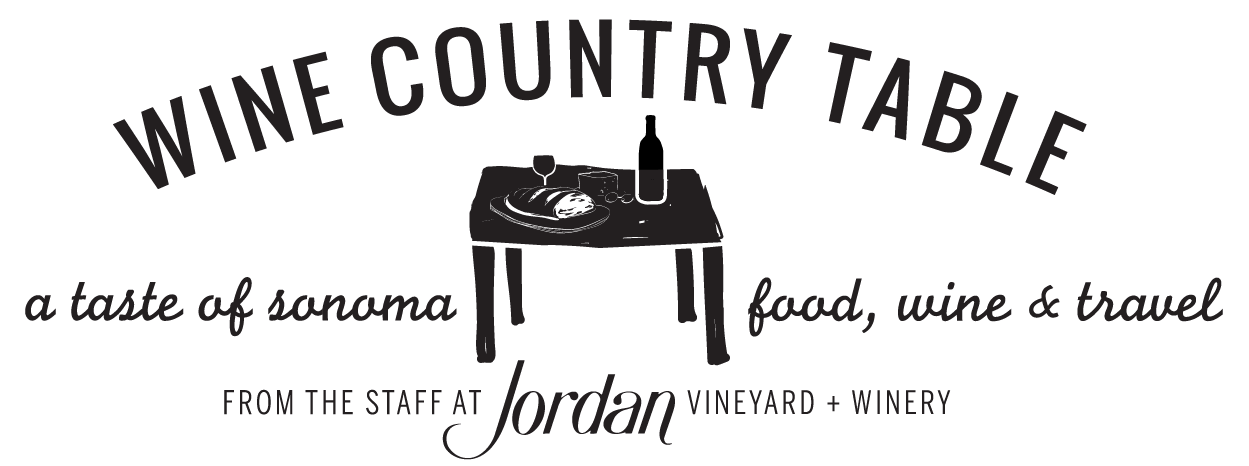
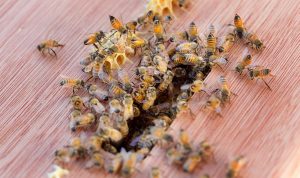
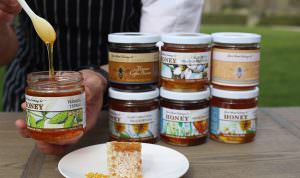
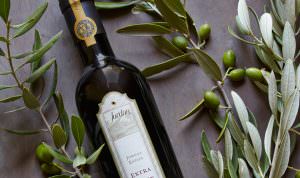
you have a beautiful place thank you for sharing 🙂